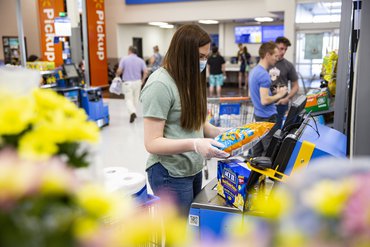Changes were afoot in-store during the past 12 months as retailers made adjustments within their brick-and-mortar locations.
Self-checkout was among the areas. At least one Kroger store transitioned to a self-checkout only format. The location in Franklin, Tennessee was selected since a high rate of customers were already opting for the do-it-themselves option.
A backlash against the technology led other retailers to scale back on the technology. According to a CNN report, British supermarket chain Booths said it would remove self-checkout stations from the vast majority of its 28 stores.
Walmart removed self-checkouts at some stores in New Mexico. After customer complaints, ShopRite pulled them at a Delaware store.
Costco added staff to these areas after learning that non-members had been using membership cards that didn’t belong to them.
Target is reportedly testing limiting its self-checkout terminals to customers with 10 items or less in certain stores.
Self-checkout related shrink is another area of concern. Losses amounting to roughly 3.5 percent of sales have been attributed to self-checkouts, according to research from Grabango a grocery tech company. When compared to their traditional cashier counterpart, that equates to 16 times more loss.
Theft became such a problem at Target that the retailer had to close nine stores across four states.
“We know that our stores serve an important role in their communities, but we can only be successful if the working and shopping environment is safe for all,” the retailer said in a statement. Target added that theft at the locations was harming its business and threatening employee and customer safety.
A Giant Food store in Washington D.C. said that it would remove all national labels from its beauty and health aisles to combat theft, reported The Washington Post.
“We want to continue to be able to serve the community, but we can’t do so at the level of significant loss or risk to our associates that we have today,” said Giant president Ira Kress.
Dollar Tree, in addition to other discount and convenience retailers, also locked up larger portions of its products. The chain reported a 30 percent decline in gross profit margin last quarter which it attributes to shrink.
In Chicago, Walgreens launched an anti-theft store with only two aisles of “low-value” products with the rest of the items kept behind the counter. The only way to purchase them is digitally through the Walgreens app or website.
Related: November Digital Grocery Sales Spike; Top Mergers, Acquisitions of 2023.

